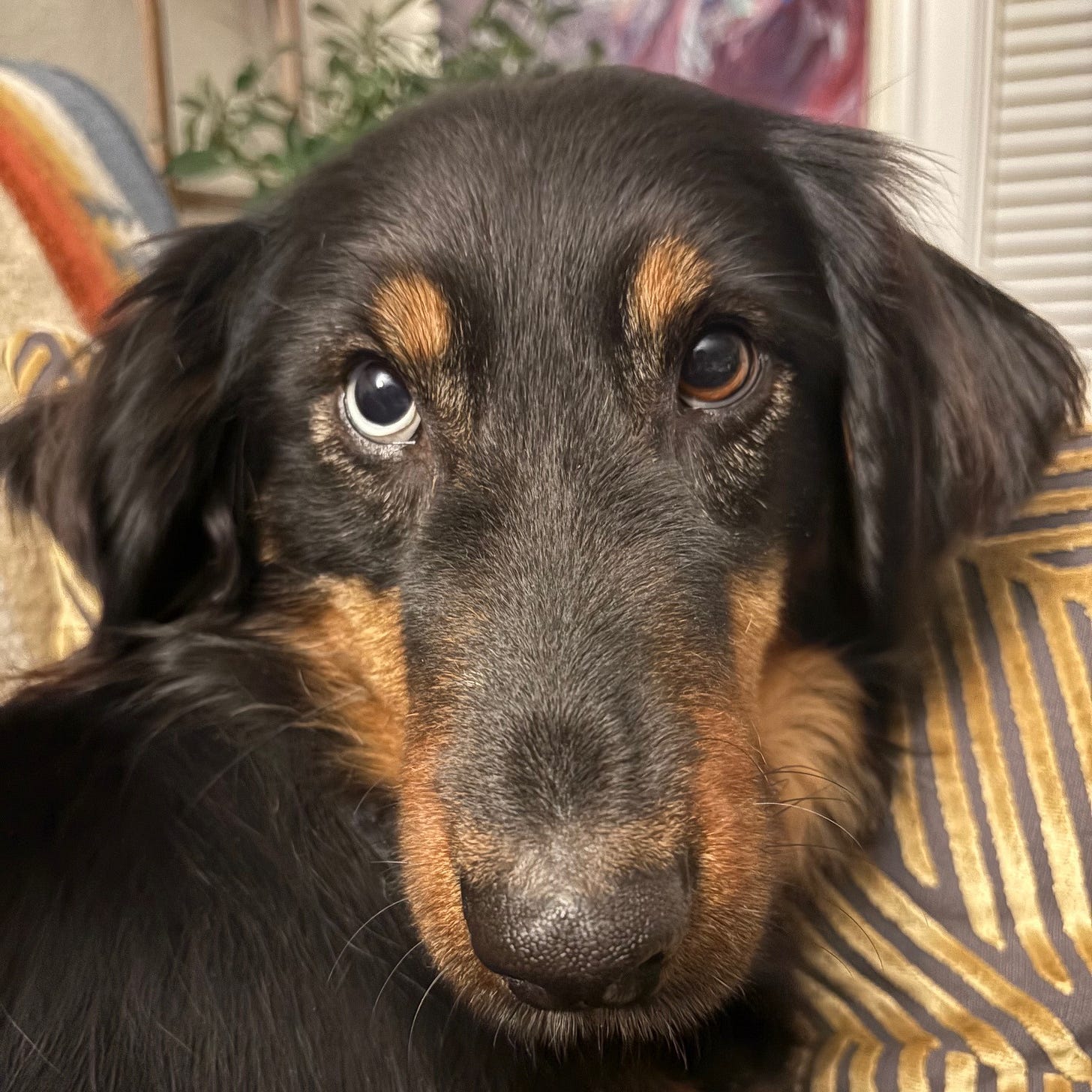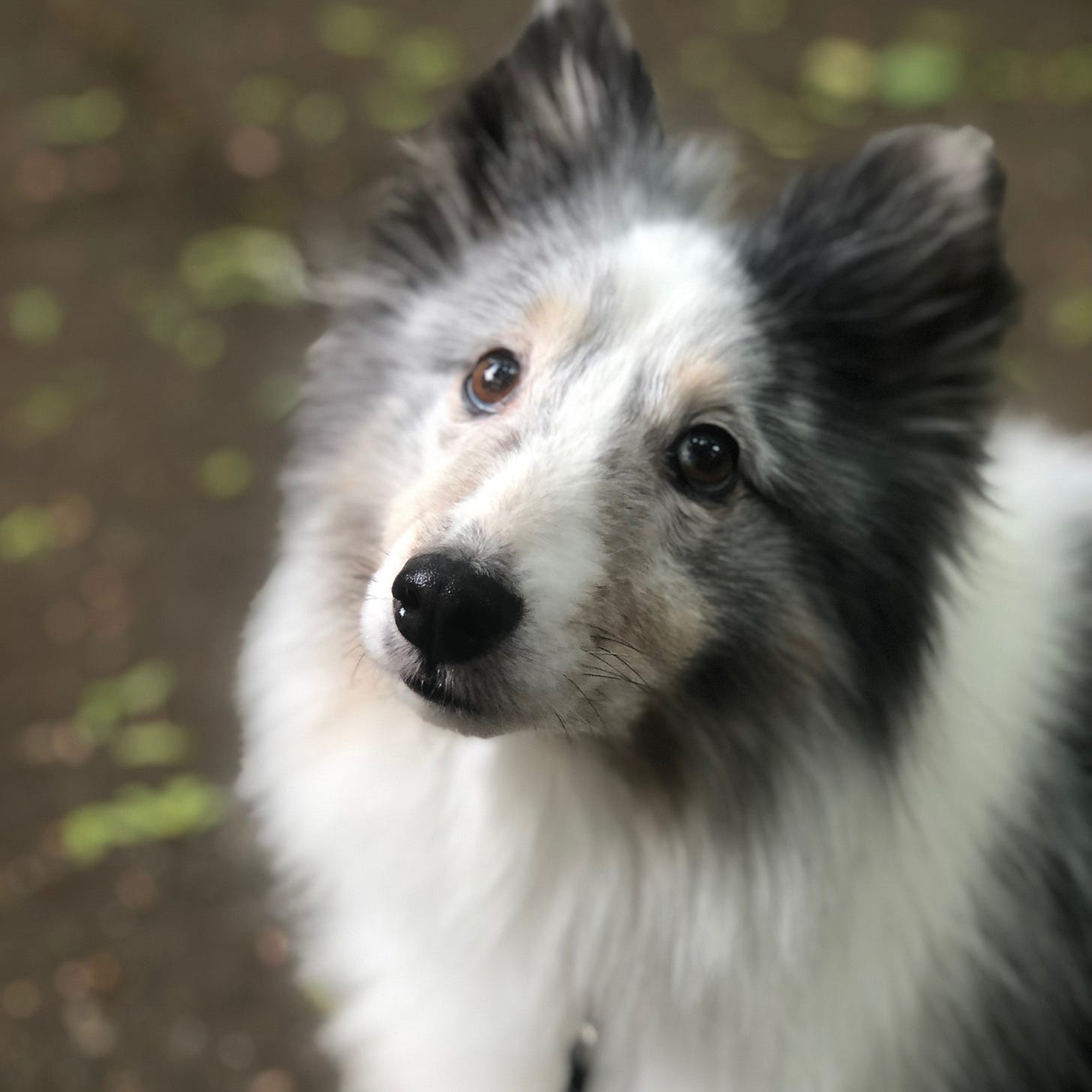Welcome to the final post in Dog Lover’s Guide’s Human Husbandry series! What is human husbandry, you ask? Great question—I made it up. If animal husbandry is the care and keeping of the creatures around us, then human husbandry is the care and keeping of ourselves. In this series, we’re focusing on how to take care of ourselves in gentle, compassionate, and healthy ways, particularly when that caregiving is hard. If you haven’t yet, make sure to check out the rest of the series: Go Play, Go to the Vet, Go to Bed, and Who Wants a Bath?
Today’s focus is on food and eating, and I’d like to start by addressing two common myths.
Myth #1: Body shape, size, and weight are moral issues.
In Western culture, one of the most universally accepted prejudices is bias against people with larger body shapes and sizes. Our culture believes that people in smaller bodies have more self-control, work harder, and are morally superior. On the other hand, our culture believes that people in larger bodies are weak, lazy, and lack moral character.
This is simply not true. The shape of your body doesn’t mean anything about your worth, value, or character.
Myth #2: The food you eat says something about your worth or goodness.
In the same way, our culture believes that eating certain food makes a person morally superior, while eating other food makes a person inferior. You’re not a good person for eating a kale salad or a bad person for eating a donut. You’re not good because you meal prep or bad because you eat fast food. Sure, kale salad and other whole foods are good for you, but that’s an assessment of the food, not of you. What you eat doesn’t mean anything about your worth, value, or character.
It’s important for us to start by addressing these myths because the conversation around food can be triggering, shaming, and otherwise harmful to people. Dog Lover’s Guide rejects the above myths and commits to breaking down damaging beliefs about food, eating, and body shape.
With that in mind, let’s dive in!
What’s Good?
When I got my first dog Sammy, I was determined to be The Best Dog Mom Ever ©. So even though I was a profoundly broke grad student who couldn’t afford to feed myself well, I bought Sam top-of-the-line grain-free food. I might as well have sprinkled gold dust in his kibble for how much it cost.
Seven years into feeding him this bougie food, I heard the news: dogs on grain-free diets were dying of heart disease. Sammy had just been diagnosed with a heart murmur. The damage was done.
The definition of “healthy food” is a moving target. One reason is that science is always discovering new things, which is great. But another reason is that the health food industry’s goal is to make money, not to help people get healthier. That makes it hard to distinguish between healthy and unhealthy food.
In the 70’s and 80’s, low-fat was considered the gold standard—until we learned that the added sugar was causing more harm than fat. Then it was low carb…until people started suffering from vitamin deficiencies. In my lifetime, potato skins and eggs have flipped from healthy to unhealthy and back again at least three times. Currently, ultra-processed foods are considered the culprit of poor health, but that’s also controversial.
So how do you know what’s healthy?
Do the best you can with the information and resources available to you.
Don’t punish yourself today for the decisions you made five years ago based on information that was accurate then but isn’t anymore.
Don’t compare yourself to other people. If a single mom living in a food desert and working two jobs only has enough time and money to get her kids boxed mac and cheese from the gas station across the street from her bus stop, that is good food. The stay-at-home dad who makes fresh baby food daily with the organic produce from his garden is also giving his kids good food. We’re not all on an equal playing field. What makes it good isn’t only the generally accepted healthiness of the food, but also the burden of time, money, energy, and access to make that meal happen. So what both the single mom and the stay-at-home dad are doing is good.
The Purpose of Food
Have you ever thought about the purpose of food in your life?
When we first got Pants, she refused to eat anything but wet food. Given that she was a street dog in Texas, I highly doubt this was normal fare for her. No, this little con artist got the shelter folks to believe that she could only tolerate the finest caviar of dog food.
My wife and I were having none of it. We’re a kibble family, so we set about training Fancy Pants to accept dry food. Through a process of literally feeding her from my palm while moving my hand closer to a food bowl each night, I trained her to eat kibble from a bowl. There was at least a week in which I had to rest my hand in her bowl in order for her to eat the food. Such a little weirdo.
Food isn’t just about sustenance. It’s about pleasure, adventure, and connection. It could be about discovery, experimentation, nutrition, or status. For Pants, it was about survival, enjoyment, and having her people nearby. The functions of food are so varied that trying to narrow it down to any one thing is missing the point.
So what’s the purpose of food for you? What do you want it to be? Try to choose at least one serious thing (nutrition, sustenance, health) and one playful thing (connection, adventure, experimentation).
Eat Mindfully
Brie was a trash panda. I couldn’t leave her alone with a trash bin for more than 60 seconds without risking catastrophe. One fateful morning, I stepped outside to get something from my car and discovered a flat tire. Forgetting my dog was an internationally renowned garbage fiend who could crack a bin lid in under five seconds, I set about changing the tire. I came back to what can only be described as a massacre. The trashcan was on its side, its contents strewn across three rooms. I don’t even know what was in that bin, because all of it was in smithereens. “Girl, I hope none of that was poisonous,” I told her. She did not appear concerned.
That evening, I came home to the most abhorrent smell I have every encountered, and reader, I’ve smelled the inside of a broken freezer full of rotted meat in the middle of a New Mexico summer. This was worse. I went to the bedroom and found Brie happily twirling around in her crate, little feet tippy-tapping in a sludge that came out of hell (hell in this case being her stomach). The vomit was five feet up the wall behind her crate. It was—impossibly—across the room. It was in her fur. It was in Sammy’s fur, and he wasn’t even in the same crate.
Brie was fine. Sammy and I were never the same.
Don’t be like Brie. When you sit down for a meal, a snack, or a nibble, take a moment to consider your food. Taste the first bite slowly. Notice what it feels like to eat from cooking to digesting. Try a mindful eating exercise. Eat the donut, the kale salad, and everything in between with intention and awareness.
It’s taken a long time, but I’m finally able to look back on Sammy’s heart disease and acknowledge that it wasn’t my fault. I don’t stress too much about what we feed Pants, as long as she likes it, she looks and acts healthy, and the vet is satisfied. The same can be true for you: do the best you can with the time constraints, physical and mental limitations, or financial barriers you face. Eat what tastes good and feels good in your body, what helps you do what’s important to you, and what draws you nearer to the people you love. And check the judgment at the door.
Do you have a favorite mindfulness tool or compassionate phrase you use for eating? Share it in the comments!










My trash pander pooch got evicted from the living room at Christmas due to the horrendous smells leaving her booty. Thankfully it wasn’t such a disaster as the one you walked in on but I think she’s made a very rememberable Christmas! 🎄 💨
Loved this series Chloe! Regarding food, I think like so many things in life - moderation is key. Lots of good points in here 👍🏼